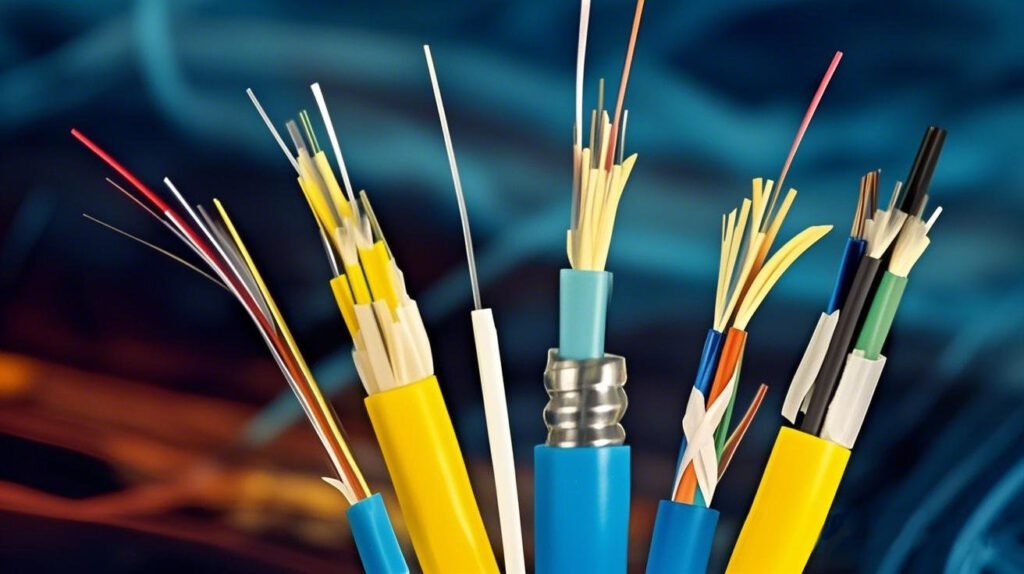How Do Fiber Optic Cables Transform the Energy Industry?

(All Kinds of Fiber Optic Cable )
As someone who's worked in the fiber optics industry for years, I can confidently say that fiber optic cables are reshaping the energy sector. Their potential is vast, and many in the industry still don’t fully realize the opportunities they bring. If you’re not yet tapping into this potential, you might be missing out on key benefits for your energy management strategies.
Fiber optic cables enhance the energy industry by improving efficiency, safety, and reliability across renewable energy, power utilities, and data centers. Their ability to transmit data quickly and reliably makes them essential for modern energy management.
Imagine being able to optimize energy flow, prevent system failures, and ensure seamless operations—all with the help of fiber optics 1. This shift is happening across various energy sectors, and it’s transforming how we manage and consume energy. Let’s explore these changes in more detail.
How Do Fiber Optic Cables Benefit Renewable Energy?
One of the key areas where fiber optics has made a mark is in renewable energy. Fiber optic cables enable better monitoring, increased efficiency, and enhanced safety across wind, solar, and hydroelectric power systems. By integrating these solutions, renewable energy providers can prevent overheating and detect system failures before they cause major disruptions.
In renewable energy, fiber optic cables support technologies like Distributed Temperature Sensing 2 and Structural Health Monitoring 3, helping prevent overheating and detect structural issues early, thus optimizing energy flow and safety.
Distributed Temperature Sensing (DTS)
DTS is an innovative use of fiber optic cables to monitor temperature in critical areas such as wind turbines and solar panels. This technology helps prevent overheating, a common issue that can lead to expensive repairs or decreased efficiency. By providing real-time temperature data, DTS allows for early intervention and ensures equipment operates within optimal temperature ranges.
Structural Health Monitoring (SHM)
In renewable energy infrastructure, such as hydroelectric power plants, fiber optics play a key role in monitoring structural integrity. Solutions like Fiber in Metal Tube (FIMT) 4 help detect small cracks or irregularities in structures, ensuring they are fixed before they lead to a failure. Early detection and maintenance are crucial in preventing catastrophic issues and ensuring the system’s long-term reliability.
What Role Do Fiber Optic Cables Play in Power Utilities?

(Fiber Optic Cable in the Energy Industry)
Power utilities rely heavily on fiber optic technology to modernize and optimize their operations. With the rise of smart grids, fiber optics have become essential for ensuring efficient communication between grid components and improving data transmission for grid management. These systems help power utilities monitor and regulate energy distribution more effectively.
For power utilities, fiber optic cables support the management of smart grids, enhance reliability and efficiency, and improve customer service through advanced technologies like remote meter reading 5.
Smart Grids
Fiber optic cables are critical in managing smart grids, which rely on high-speed, reliable data transfer. By enabling real-time communication between sensors, controllers, and IT systems, fiber optics ensure that grids can manage energy loads efficiently and integrate renewable energy sources seamlessly. This connectivity plays a pivotal role in grid stability and the delivery of energy across vast areas.
Reliability and Efficiency
Fiber optics are ideal for use in power grids due to their high bandwidth and resistance to electromagnetic interference. Their durability makes them perfect for extreme weather conditions, ensuring that the power grid remains stable and operational, even under challenging circumstances. Quick detection of issues helps prevent downtime, improving the grid's reliability.
Customer Service
With the support of fiber optics, power utilities can offer more efficient customer service. Features like remote meter reading, automated billing, and quicker service responses are all made possible by fiber optic infrastructure. This leads to improved customer satisfaction, as services become more accurate and timely.
How Do Fiber Optic Cables Enhance Data Centers and Energy Efficiency?
Fiber optic cables also play a significant role in enhancing energy efficiency in data centers. By reducing energy consumption and maintaining high-quality data transmission over long distances, fiber optics help data centers optimize their operations.
Fiber optic cables in data centers reduce energy consumption and maintain signal quality over long distances, which lowers operational costs and boosts energy efficiency.
Lower Power Requirements
Fiber optics transmit data using light, which doesn’t face the same resistance that electrical signals do in copper cables. This means fiber optic systems require less power to operate, reducing the need for signal amplifiers. Over time, this can significantly lower the energy consumption of a data center.
Long-Distance Transmission
Fiber optics are also ideal for transmitting data over long distances without significant loss of signal quality. This means data centers can expand their operations without worrying about signal degradation. The ability to maintain data integrity over long distances eliminates the need for additional power-hungry equipment, further lowering energy costs.
How Do Fiber Optic Cables Support Revenue Generation and Operational Improvements?
Fiber optic cables not only improve operations but also open up new revenue opportunities. Utility companies can use fiber optic infrastructure to offer broadband services or lease unused capacity to generate additional income. Moreover, fiber optics improve communication across the energy sector, ensuring that energy distribution is efficient and responsive.
Utility companies can generate revenue by leasing fiber optic capacity or offering broadband services, while improved communication enhances operational reliability and efficiency.
Leasing and Broadband Services
Fiber optic networks can be monetized by leasing spare capacity or by providing broadband services. This opens up new revenue streams for utility companies, while also supporting the expansion of broadband access to underserved regions. For companies involved in telecommunication services, fiber optics offer an opportunity to diversify their business and increase revenue.
Operational Improvements
Fiber optics enable fast, reliable communication between energy facilities, which is critical for improving response times to potential issues. This rapid communication supports real-time monitoring and management of power grids, leading to improved efficiency and minimized downtime. With fiber optics, utility companies can ensure smoother operations and better resource management.
Conclusion
Fiber optic cables are transforming the energy industry by improving efficiency, safety, and reliability in renewable energy, power utilities, and data centers. Their fast, reliable data transmission makes them a cornerstone of modern energy management. By adopting and leveraging fiber optic technology, companies in the energy sector can enhance their performance, reduce costs, and ensure more sustainable operations.

(Fiber optic cables are transforming the energy industry)
The term "fiber optics" broadly encompasses the technology's advantages in efficient data transmission and its lower susceptibility to electromagnetic interference compared to alternatives. ↩
Distributed Temperature Sensing (DTS) supports renewable facilities by ensuring continuous monitoring, thereby preventing overheating and enhancing performance. ↩
Structural Health Monitoring (SHM) systems employ fiber optics to detect and report structural integrity issues much earlier, preventing potential failures. ↩
Fiber in Metal Tube sensors are vital in detecting small anomalies within infrastructure, facilitating early maintenance interventions to enhance safety and prolong life spans. ↩
Remote meter reading facilitated by fiber optics improves accuracy and efficiency, providing timely service for utilities and improving user relations and billing processes. ↩








